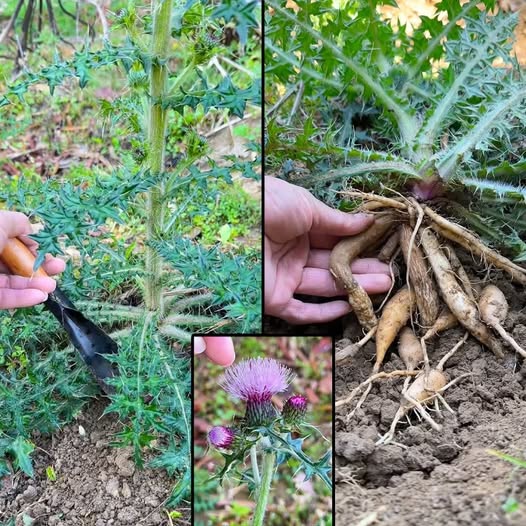Bull thistle, scientifically known as Cirsium vulgare, is a wild plant commonly found in fields, roadsides, and disturbed areas across North America, Europe, and other temperate regions. Often considered a weed due to its spiny leaves and rapid spread, bull thistle actually holds several surprising benefits, both ecological and practical.
Identification and Characteristics
Bull thistle is a biennial plant that can grow up to 6 feet tall. It features a thick, spiny stem and large, lobed leaves covered in sharp spines. Its purple flower heads bloom from mid-summer to early fall, attracting a variety of pollinators like bees and butterflies.
Ecological Importance
Despite its prickly nature, bull thistle plays a vital role in ecosystems. Its nectar-rich flowers provide food for pollinators, including native bees and butterflies. Additionally, its seeds serve as a food source for birds such as goldfinches.
Medicinal Uses
Traditionally, parts of the bull thistle plant have been used in herbal remedies. The roots and leaves contain compounds believed to support liver health and act as a mild diuretic. Some herbalists use bull thistle extracts to aid digestion and detoxification, although scientific evidence is limited.
Culinary Uses
Young bull thistle shoots and roots can be consumed when properly prepared. The shoots are peeled to remove spines and can be boiled or sautéed like asparagus. The roots, once cleaned and cooked, have a mild, nutty flavor.
Cautions
While bull thistle has benefits, its spiny nature makes it difficult to handle without protective gloves. It can also become invasive if left unmanaged in gardens or farmland.
Summary
Bull thistle is much more than just a pesky weed. It supports wildlife, offers potential medicinal benefits, and can be an interesting addition to foragers’ diets. With proper care and respect for its spines, bull thistle is a wild plant worth appreciating.
